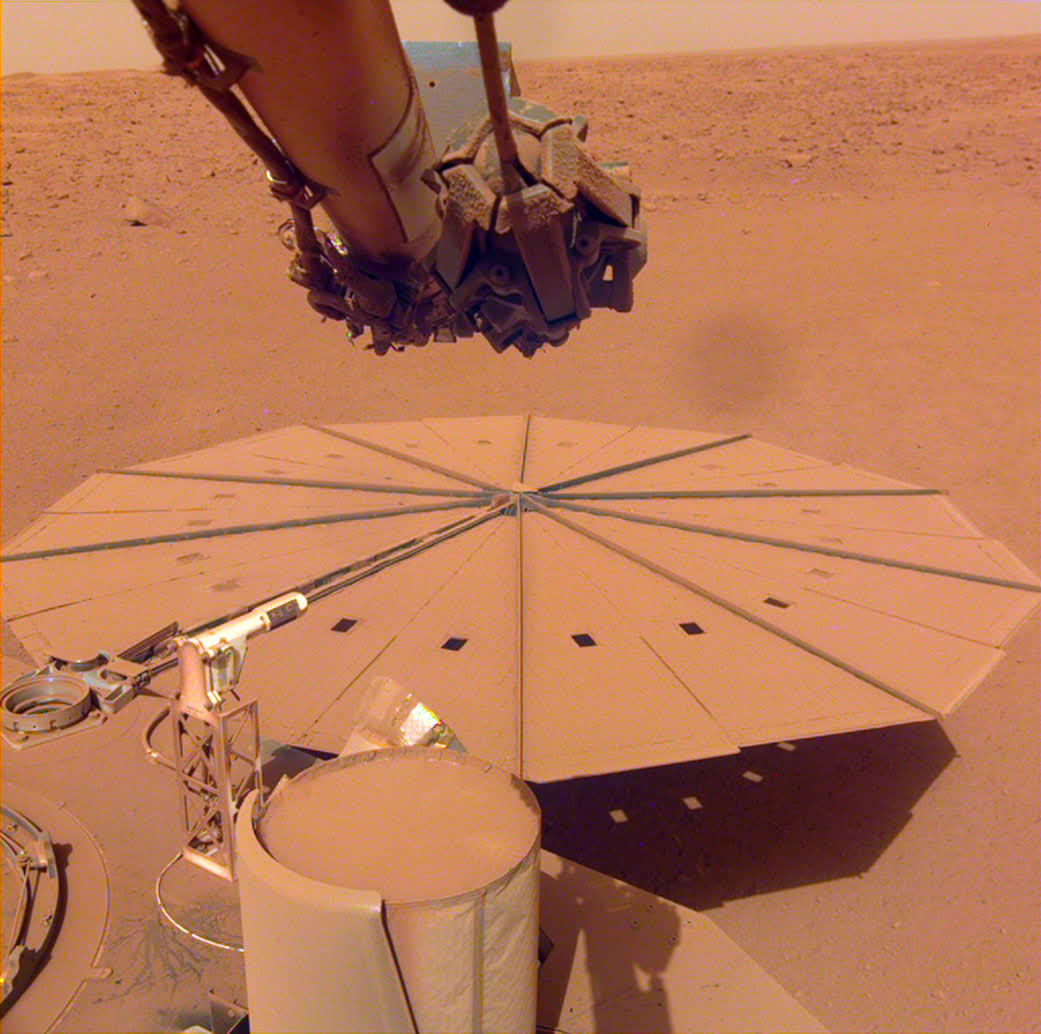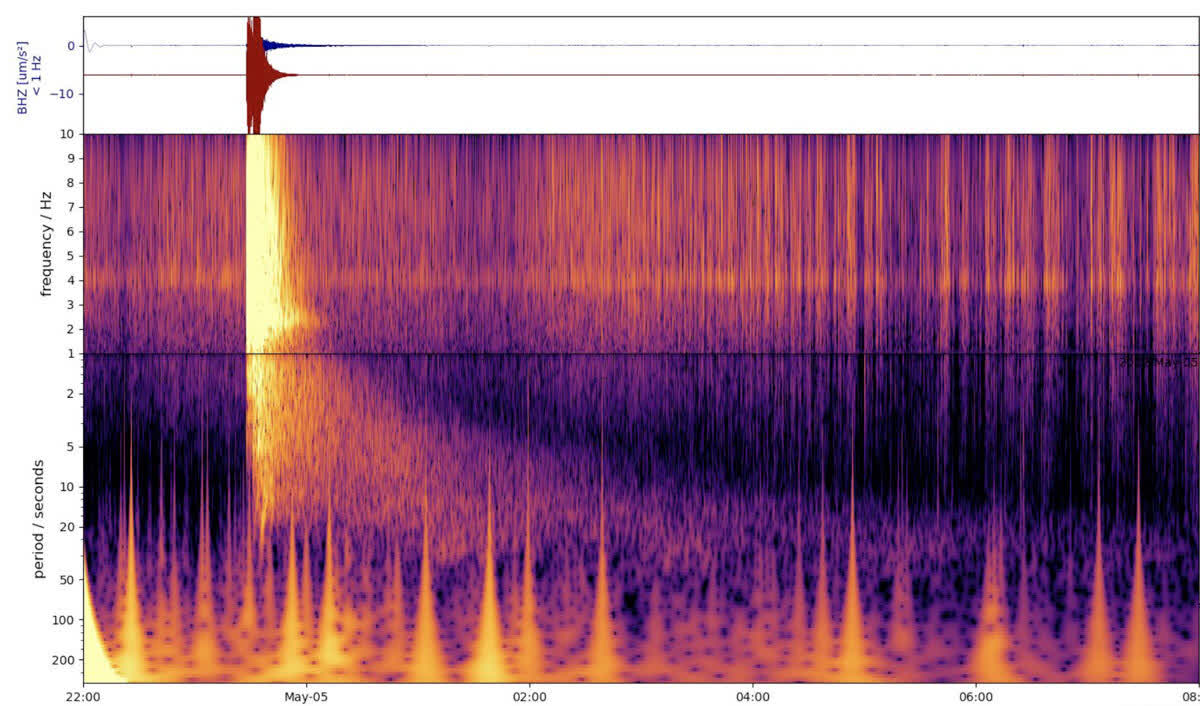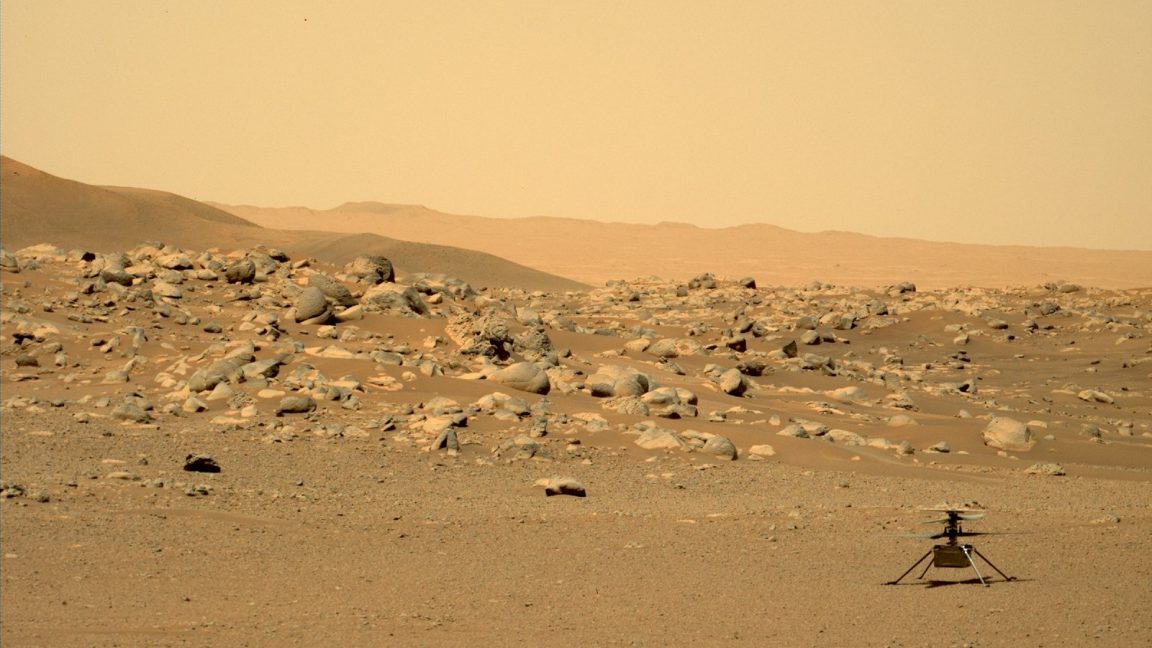The big picture: InSight's dual solar panels, each measuring about seven feet wide, provide the requisite power for the lander. Unfortunately, the panels have accumulated enough dust to severely impact efficiency. When InSight first landed, its panels were able to generate about 5,000 watt-hours each Martian day. The dust-covered panels are now only able to produce roughly 500 watt-hours per sol.

NASA's InSight lander is on pace to end science operations this summer and become fully inoperable by December.
InSight, short for Interior Exploration using Seismic Investigations, Geodesy and Heat Transport, launched from Vandenberg Space Force Base in California on May 5, 2018, and touched down on the Red Planet less than nine months later.
The lander was designed to detect seismic activity on the rocky planet. To date, InSight has detected more than 1,300 marsquakes – the most recent being a magnitude 5 quake that occurred on May 4.

(This spectrogram shows the largest quake ever detected on another planet. Estimated at magnitude 5, this quake was discovered by NASA's InSight lander on May 4, 2022, the 1,222nd Martian day, or sol, of the mission.)
Dust on the solar panels eventually became a serious problem. NASA even used the lander's robotic arm in an innovative way to remove dust from the panels, allowing it to operate longer than it would have been able to otherwise. Upcoming seasonal changes will put additional dust in the air, effectively reducing sunlight even more. Without a more powerful dust-cleaning event like a passing whirlwind, InSight will soon run out of juice.
"InSight has transformed our understanding of the interiors of rocky planets and set the stage for future missions," said Lori Glaze, director of NASA's Planetary Science Division.
Specifically, the data has allowed scientists to measure the depth and composition of the planet's crust, mantle and core. Learnings can be applied to Earth, the Moon, Venus and other rocky planets in our solar system, Glaze added.
https://www.techspot.com/news/94637-dust-covered-solar-panels-force-nasa-end-mars.html

